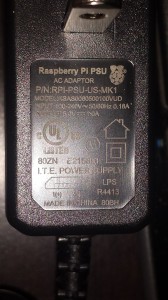I keep forgetting, that my university teaches All Source Intelligence Analysis, not just Open Source, but it is easy to forget when OSINT so prevalent. The school’s classes, and the IASA club does do others.
Yes we do lots of OSINT, and Social Media / Cyber Intelligence looking at the social media sites, ip address related tools, and the logs of the servers. However, we also use other for Cyber Intelligence to see what’s going on, on the servers. We use the logs, the open connections, what’s odd.
We do use tools to track wireless signals, mostly for wifi, but there are a few people at the school, in the IA program looking at more than just wifi. They even ran a Fox Hunt (hid a radio and had people go find it). We use packet captures on networks and on servers to see what is going on, on the wire.
We do Human Intelligence probably the most without realizing it. Any time we have to interact with someone, usually as a customer on the phone. We have to elicit the information needed from them. There is lots of cruft to discard to get the data we need, but we can’t fix their issues until we do. We don’t have to be help desk to get that level. Sure we’re not turning people, to help us spy on things, but it’s still getting the info, finding what is realization via analysis, and then having and end “product”.
I know I’ve used Google Earth to find information, by looking at the images, and building out from there. Where I want to live, aerial views of crime locations, working with a team to plot those locations.
Ok, so I can’t think of anything where MASINT comes in to play, at least not off the top of my head, but I’m sure there is something. I’m sure that mapping out nuclear bomb blast radius for Disaster Recovery at work does not count. Don’t ask, but like I said, I’m pretty sure it didn’t count. I didn’t do measurements and used someone else’s tools on the web which just overlaid on Google Maps. I don’t have a way to test and validate, well I guess I could doing OSINT at a library, and then mapping by hand once I understood the bomb blasts radius.
I must remember, the degree program taught me things that I don’t think about daily too.

